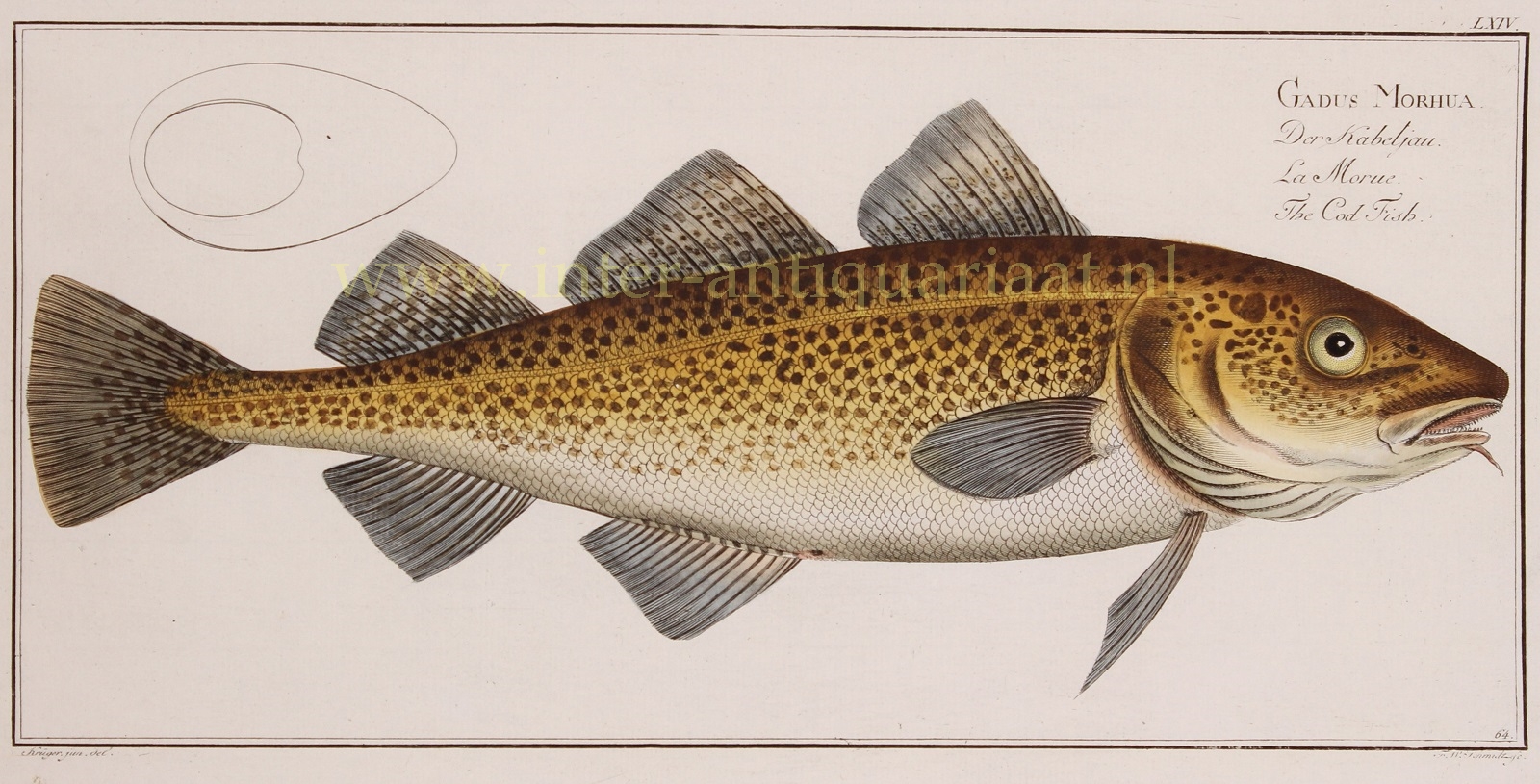COD FISH
“Gadus Morhua/Der Kabeljau/La Morue/The Cod.” (plate 64), copper engraving made by Ludwig Schmidt after the drawing of Krüger jr, for Markus Elieser Bloch’s “Allgemeine Naturgeschichte der Fische” published in Berlin between 1782 and 1795. With original hand colouring. Size: 19 x 38 cm.
According to Bloch in his Allgemeine Naturgeschichte der Fische, a 12-volume, beautifully illustrated comprehensive work on fishes: the cod fish “is an inhabitant of all the world’s oceans where it can be found between the 40th and 66th degrees north latitude. You may still find it at higher latitudes than in Greenland; but of poor quality and fewer in number. It is very often found in Terreneuve, Capbreton, New Scotland, New England, on the Norwegian and Icelandic coasts, also on the Doggersbank and around the Orcadian Islands.
For many nations it is an extremely important part of the food industry and trade, especially a source of wealth for the English; it feeds the Icelanders, brings in a few tons of gold for the Norwegians every year, and employs a large number of English, Dutch and French seamen.
The cod is usually two to three feet in length and weighing fourteen to twenty pounds, but it is also found much larger: in England one has long been caught which was five feet eight inches long, and five feet in girth and weighed seventy-eight pounds. It usually resides in the depths of the open sea and appears on the coasts and banks during spawning time. Its food is crabs, squid, herring and other fish, and it is so greedy that it does not even spare its own species. It possesses the characteristic of the birds of prey that it can get rid itself of indigestible food by vomiting.”
Bloch’s labour on the “Allgemeine Naturgeschichte der Fische” occupied a considerable portion of his life, and is considered to have laid the foundations of the science of ichthyology. The publication was encouraged by a large subscription, and it passed rapidly through five editions in German and in French. Bloch made little or no alteration in the systematic arrangement of Peter Artedi and Carl Linnaeus, although he was disposed to introduce into the classification some modifications depending on the structure of the gills. To the number of genera before established, he found it necessary to add nineteen new ones, and he described 276 species new to science, many of them inhabitants of the remotest parts of the ocean, and by the brilliancy of their colours, or the singularity of their forms, as much objects of popular admiration as of scientific curiosity.
Bloch is considered the most important ichthyologist of the 18th century.
Price: Euro 350,-


